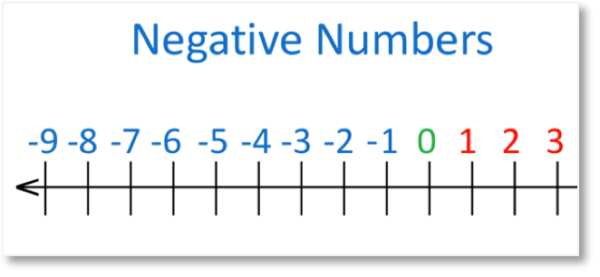Traversing an Infinite?
by Jimmy Akin
Filed under The Existence of God, Uncategorized

God created the universe a finite time ago, but there’s a question of whether we can prove this by reason alone.
Defenders of the Kalaam cosmological argument often claim that the universe cannot have an infinite history because “traversing an infinite” is impossible.
In his book Reasonable Faith (pp. 120-124), William Lane Craig puts the argument this way
1. The series of events in time is a collection formed by adding one member after another
2. A collection formed by adding one member after another cannot be actually infinite
3. Therefore, the series of events in time cannot be actually infinite.
The second premise of this argument is the one that deals with “traversing an infinite.” Craig writes:
Sometimes this problem is described as the impossibility of traversing the infinite.
Still a third way of describing it is saying that you can’t form infinity “by successive addition.”
Whatever expression you prefer, each of these expressions refer to the intuition people commonly have about infinity—that “you can’t get there from here.”
Where Is “Here”?
If you can’t get to infinity from here, where is “here”?
However you want to phrase the problem—getting there from here, traversing an infinite, or successive addition, this is a question that needs to be answered.
Let’s take another look at the second premise:
2. A collection formed by adding one member after another cannot be actually infinite
What does it mean to “form” a collection by adding one member after another?
Perhaps the most natural way to take this would be to form such a collection from nothing. That is, you start with zero elements in the collection (or maybe one element) and then successively add one new member after another.
And it’s quite true that, if you form a collection this way, you will never arrive at an infinite number of members. No matter how many elements you add to the collection, one at a time, the collection will always have a finite number of elements.
This can be seen through a simple counting exercise. If you start with 0 and then keep adding +1, you’ll get the standard number line:
0, 1, 2, 3, 4, 5, 6, 7 . . .
But no matter how many times you add +1, the resulting number will always be finite—just one unit larger than the previous finite number.
However, there is a problem . . .
The First-and-Last Fallacy
As I’ve discussed elsewhere, any string of natural numbers that has both a first and a last element is—by definition—finite.
Any time you specify a first natural number and a last natural number, the space between them is limited.
It thus would be fallacious reasoning to envision an infinite timeline with both first and last elements.
Yet it is very easy to let the idea of an infinite past having a beginning somewhere “infinitely far back” unintentionally sneak back into discussions of the Kalaam argument.
It can easily happen without people being aware of it, and often our language is to blame:
- The natural sense of the word “traverse” suggests going from one point to another, suggesting both a beginning point and an end point.
- So does the idea of “forming” an infinite collection. If we imagine forming a collection, we naturally envision starting with nothing (a collection with no members) and then adding things to it.
- And if we think of getting to infinity “from here,” we naturally think of a starting point in the finite realm (“here”) and an end point (“infinity”).
Without at all meaning to, it’s thus very easy to fall into the trap of subconsciously supposing both a starting point and an ending point in a supposedly infinite history.
This happens often enough that I’ve called it the First-and-Last Fallacy.
Taking No Beginning Seriously
In Reasonable Faith, Craig denies that this is how his argument should be understood. He writes:
Mackie and Sobel object that this sort of argument illicitly presupposes an infinitely distant starting point in the past and then pronounces it impossible to travel from that point to today. But if the past is infinite, they say, then there would be no starting point whatever, not even an infinitely distant one. Nevertheless, from any given point in the past, there is only a finite distance to the present, which is easily “traversed.” But in fact no proponent of the kalam argument of whom I am aware has assumed that there was an infinitely distant starting point in the past. The fact that there is no beginning at all, not even an infinitely distant one, seems only to make the problem worse, not better (boldface added).
Craig thus wishes us to understand his argument not as forming an infinite collection of past historical moments from an infinitely distant starting point—i.e., from a beginning.
It’s good that he is clear on this, because otherwise his second premise would commit the First-and-Last Fallacy.
But does this really make things worse rather than better?
It would seem not.
Formed from What?
If we are not to envision a collection being “formed” from nothing by successive addition, then it must obviously be formed from something. Namely, it must be formed from another, already existing collection.
For example, suppose I have a complete run of my favorite comic book, The Legion of Super-Heroes. Let’s say that, as of the current month, it consists of issue #1 to issue #236.
Then, next month, issue #237 comes out, so I purchase it and add it to my collection. I now have a new, larger collection that was “formed” by adding one new member to my previous collection.
Now let’s apply that to the situation of an infinite history. Suppose that the current moment—“now”—is the last element of an infinite collection of previous moments (with no beginning moment).
How was this collection formed?
Obviously, it was formed from a previous collection that included all of the past moments except the current one.
Let’s give these things some names:
- Let P be the collection of all the past moments
- Let 1 represent the current moment
- And let E represent the collection of all the moments that have ever existed
With those terms in place, it’s clear that:
P + 1 = E
We thus can form one collection (E) from another collection (P) by adding a member to it.
But Can It Be Infinite?
Now we come to Craig’s second premise, which said that you can’t form an actually infinite collection by adding one member after another.
If you imagine forming the collection from nothing—and thus commit the First-and-Last Fallacy—then this is true.
But it’s not true if you avoid the fallacy and imagine forming an actually infinite collection from a previous collection by adding to it.
The previous collection just needs to be actually infinite as well. If P is an actually infinite collection and you add 1 to it, E will be actually infinite as well.
And this is what we find in the case of an infinite past. Let us envision an infinite past as the set of all negative numbers, ending in the present, “0” moment:
. . . -7, -6, -5, -4, -3, -2, -1, 0.
The set of all the numbers below 0 is infinite, but so is the set of all numbers below -1, all the numbers below -2, and so on. Each of these collections is actually infinite, and so we can form a new, actually infinite set by taking one of them and adding a new member to it.
Understood this way, Craig’s second premise is simply false. You can form an actually infinite collection by adding new members to an actually infinite collection—which is what we would have in the case of a universe with an infinite past, one that really does not have a starting point.
Conclusion
What we make of Craig’s argument will depend on how we take its second premise.
Taken in what may be the most natural way (forming an infinite collection from nothing—or from any finite amount—by successive addition), will result in the argument committing the First-and-Last Fallacy.
But if we take it in the less obvious way (forming an infinite collection by adding to an already infinite collection), then the second premise is simply false.
There may be other grounds—other arguments—by which one might try to show that the universe cannot have an infinite past.
But the argument from “successive addition,” “traversing an infinite,” or “getting there from here” does not work.
Depending on how you interpret it, the argument either commits a fallacy or uses a false premise.
Related Posts
Note: Our goal is to cultivate serious and respectful dialogue. While it's OK to disagree—even encouraged!—any snarky, offensive, or off-topic comments will be deleted. Before commenting please read the Commenting Rules and Tips. If you're having trouble commenting, read the Commenting Instructions.












